Back in April, my former professor sent round an email listing archaeological excavations and surveys taking place in the summer, autumn and winter of 2021. I applied for a bunch of excavations in Germany, a three-month excavation in India and a two-week geophysical survey in Serbia. I was especially hoping for the last two. Unfortunately, the excavation in India was cancelled due to Covid, and I wasn’t chosen for the excavations in Germany. BUT I was thrilled to get the opportunity to participate in the prospection in Serbia!
Not only would this project give me a great opportunity for further learning and networking, geophysical survey was also something I’d never tried before and I was very eager to explore this part of archaeology. I’d also never been to Serbia before, so it also gave me an opportunity to explore a new country!
My trip to Serbia began on October 9th, just five days after returning home from my travels in Georgia. I said goodbye to my family and caught the train to Kiel where I spent a night in a cozy Airbnb. The next morning, I walked to the local university and met up with the fellow archaeologists whom I would be joining on the trip (Kata, Romy, Martin, Till, Sebastian – or Sebbo – and Henning, all from Kiel University). I was the only outsider, the only one who didn’t know anyone, but it wasn’t long until I found my place in the group!
With the cars packed full of gear, we were on the road shortly after 7 AM. I had the pleasure of sharing the back seat with little Lenka, the cutest little puppy who quickly became my best friend! We were driving all the way to Novi Bečej, our base in Serbia, over the course of two days, with a night at a fancy hotel in Brno in the Czech Republic.
The drive was long and tiring, but I spent most of it working on my blog when I wasn’t cuddling Lenka, staring out of the window, looking at the different landscapes passing by, or talking with my new colleagues. Crossing the border into Serbia was a pain – both the Hungarian and the Serbian side took a while checking our papers. But eventually, we made it over and left the highway behind. We drove along country roads through tiny villages as we made our way to our new home in Novi Bečej. We arrived at our guesthouse in the evening and were met by Robert and Mila and their adorable baby Polina, and then Romy and I settled into the room we’d be sharing for the following two weeks. I’ve previously written about Novi Bečej and what we got up to in the weekend. Click here to read all about it!
As always when working on archaeological projects overseas, I wrote a diary every evening mainly for myself to remember what we got up to – but I decided to share it here for anyone who’s interested in archaeology in Serbia. But you’ll have to wait for the publication of the sites for more detailed information about our results!


Day 1: Tuesday, October 12th 2021
The following morning, we awaited the arrival of two local archaeologists (Aleksandar and Nikola) before setting out to our first survey around 11 AM.
Our purpose in Serbia was to carry out geophysical surveys to gain information on a bunch of different sites using a magnetometer which can detect and map out archaeological features and artifacts. Our main goal was to find out where Neolithic (late Stone Age) settlements are located in the area surrounding Novi Bečej.
The first day, we drove along what looked like a deserted holey gravel road to a site near the village of Novo Milosovo, about 20 kilometres from Novi Bečej. Based on the finds of a local collector, the site is dated from the early Neolithic to the Copper Age, ca. 6.000-3.800 BC. We spent the first few hours trying to assemble our magnetometer which was a lot harder than it looks – but it became easier each day! We did some field surveying and collected lots of pottery sherds including rim sherds and some with possible decoration. When the magnetometer was ready, we mapped out the entire field but the results weren’t great.
We left the site at 4.30 PM, and had the evening to ourselves to work and go shopping before settling down at the restaurant across the street for our evening meal.
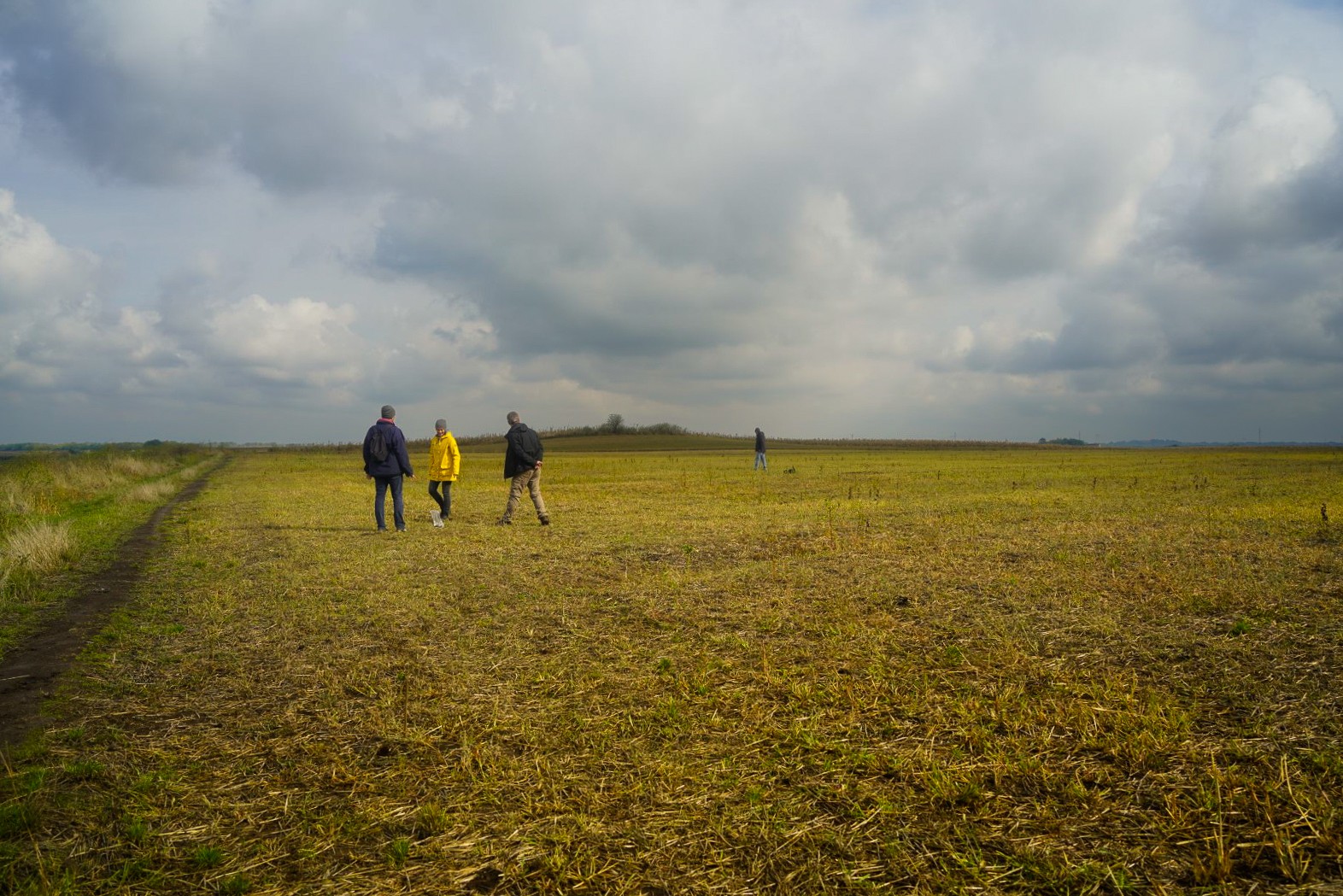

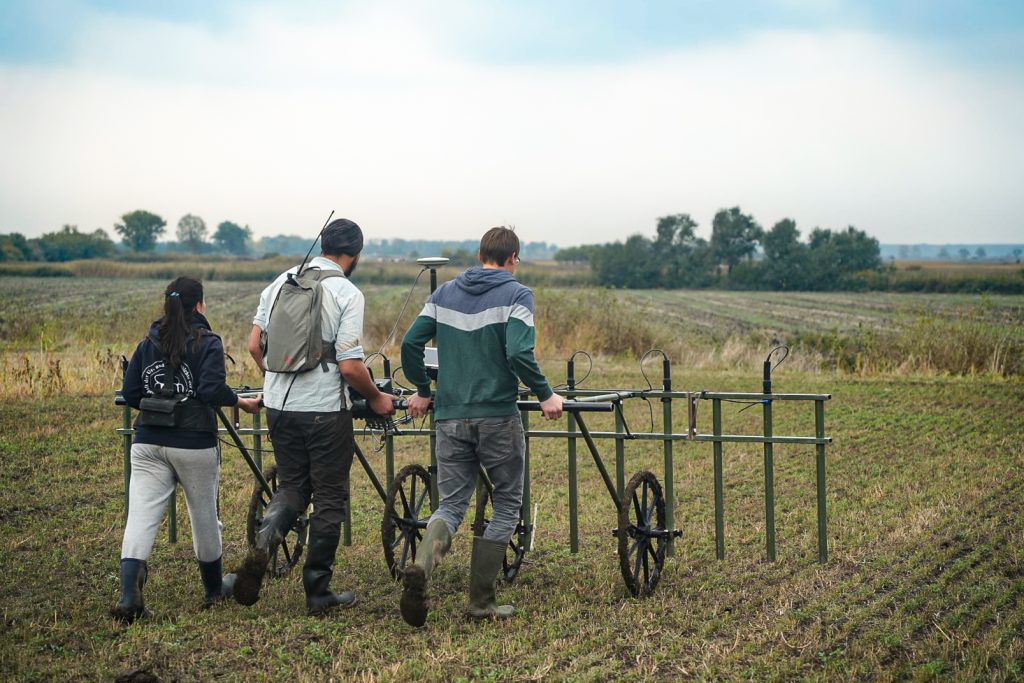
Day 2: Wednesday, October 13th 2021
On the second day, we left much earlier than the day before, at 8 AM, and ended the day at 5 PM. It was a long day, but also a very interesting one as we spent most of it cleaning exposed (seemingly Neolithic) profiles of two pits dug into a loess sediment layer. The pits were jam-packed with artifacts; bones and pottery sherds galore were sticking out of the exposed profiles, inviting us to take them with us back home.
But first we had to clean the profiles and document them. While some of the guys spent the majority of the day doing this, I spent most of it mapping out the field above but there wasn’t much to be seen. I also spent time doing surface collecting, and helped to collect artifacts from the exposed profile. While the pits most likely date from the Neolithic, the surface collections from the day suggest a mix of Iron Age and Medieval remains.
The site of the day was located near the one we’d worked on the day before, about 500 metres from it. When we got back to Novi Bečej in the evening, Romy and I visited the local thrift store; I bought a dress and Romy bought two sweaters and a dress! The rest of the evening was spent eating and enjoying each other’s company before crashing out, exhausted from a long day of trotting through fields with the magnetometer.
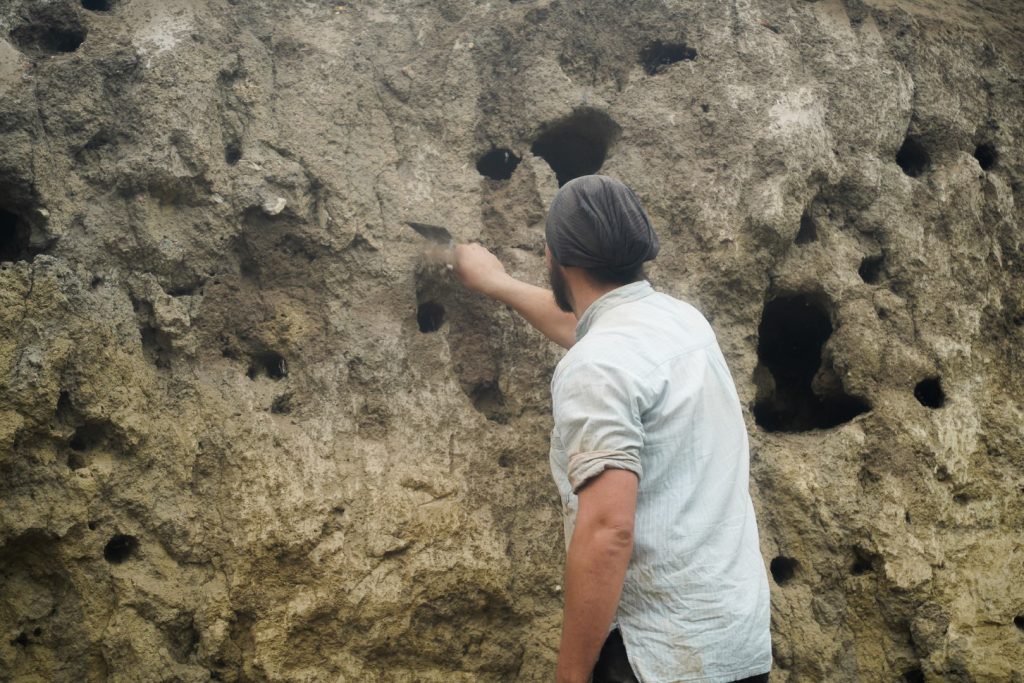
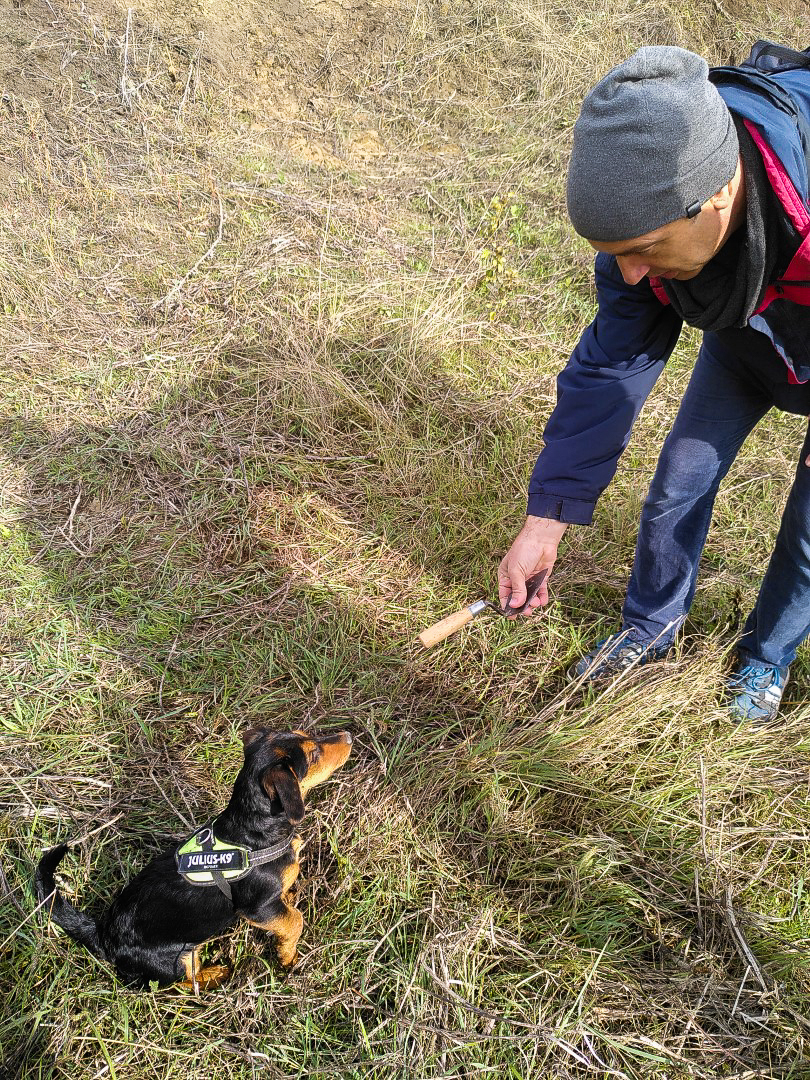
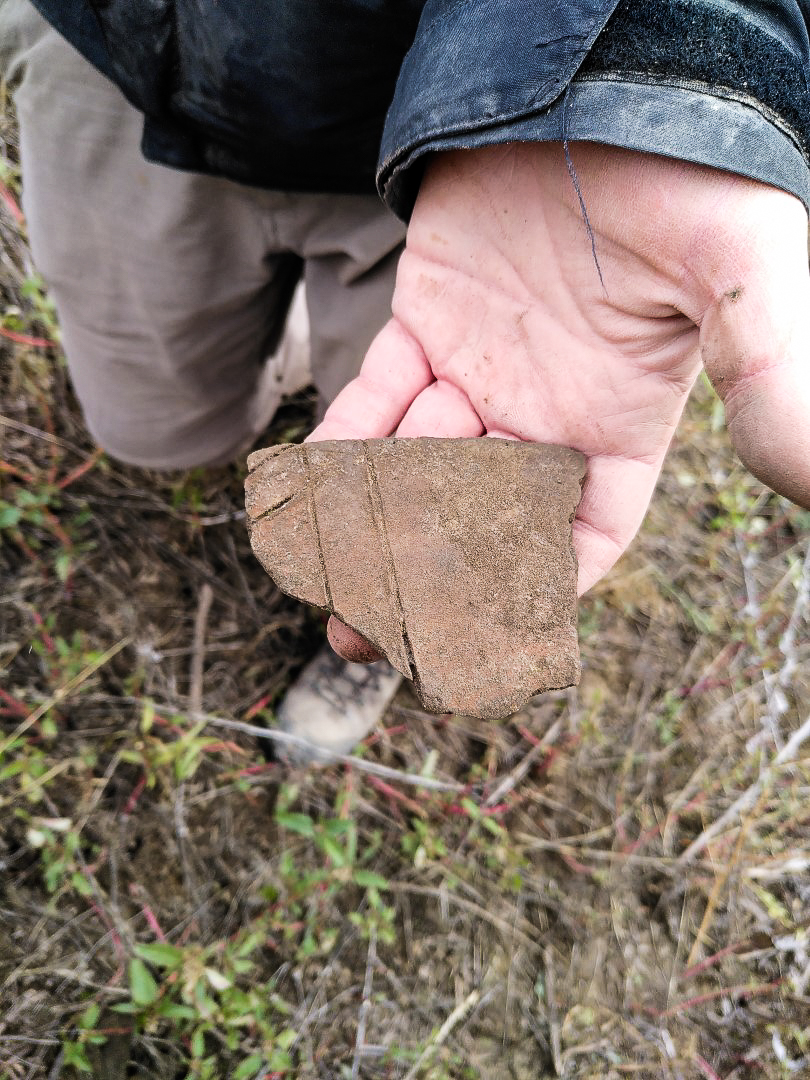
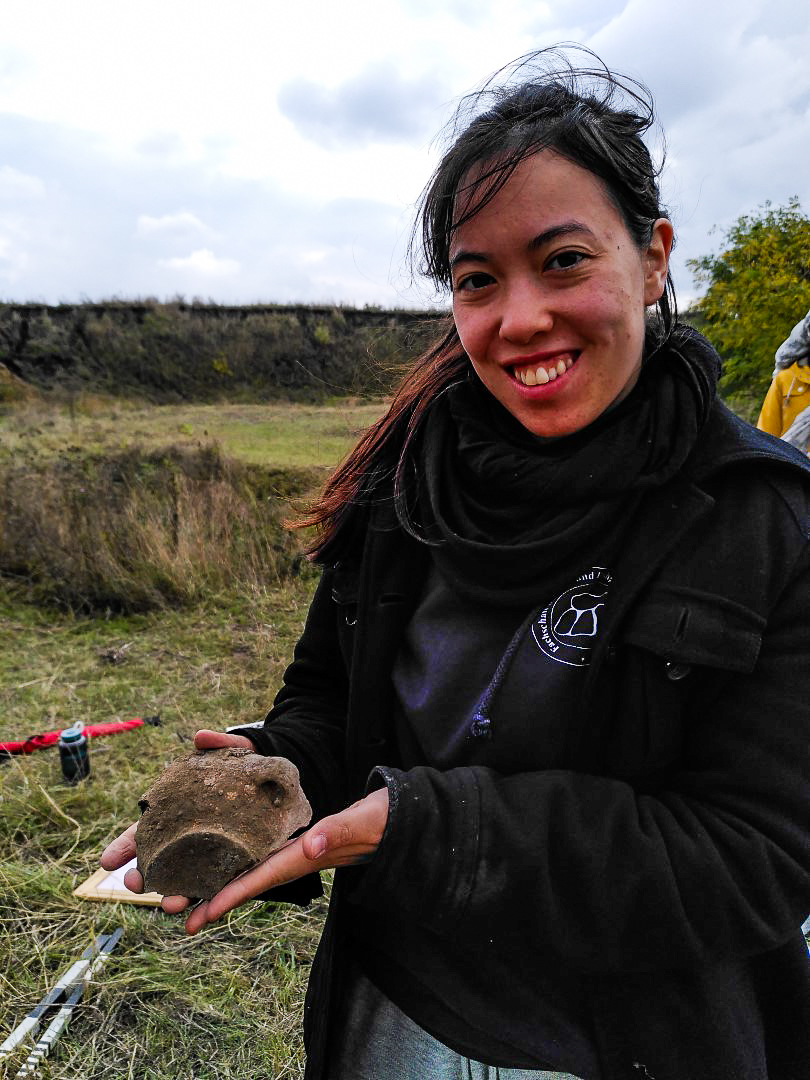

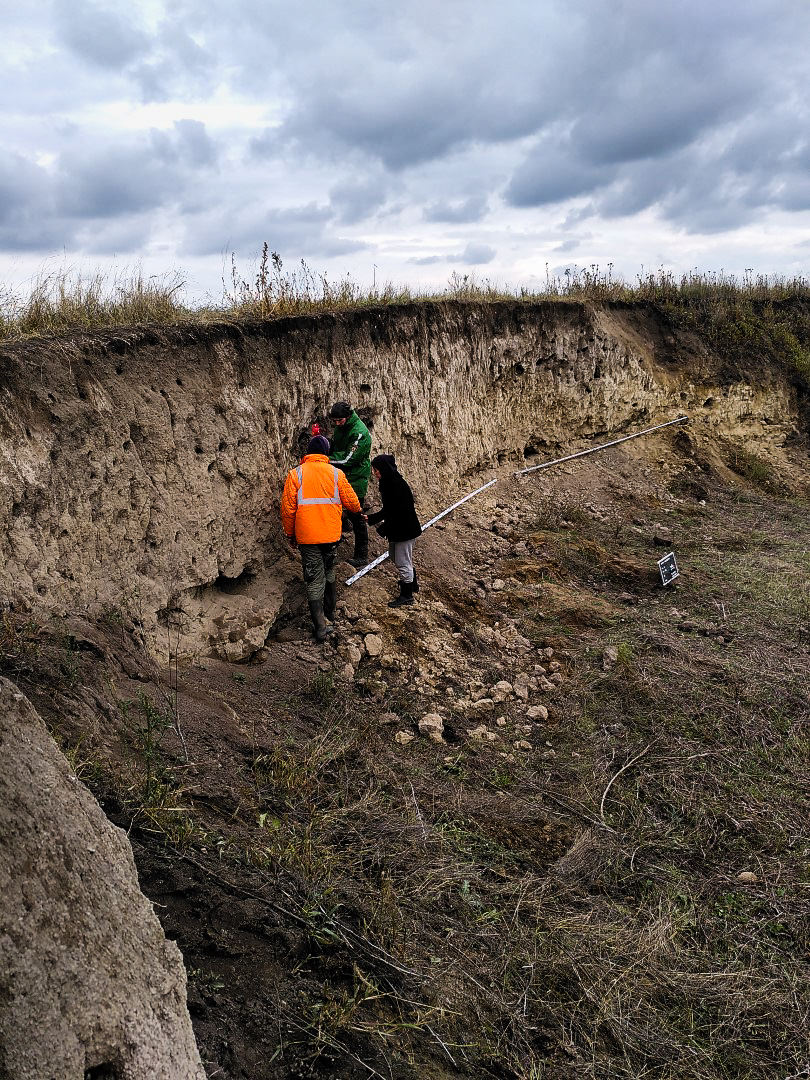
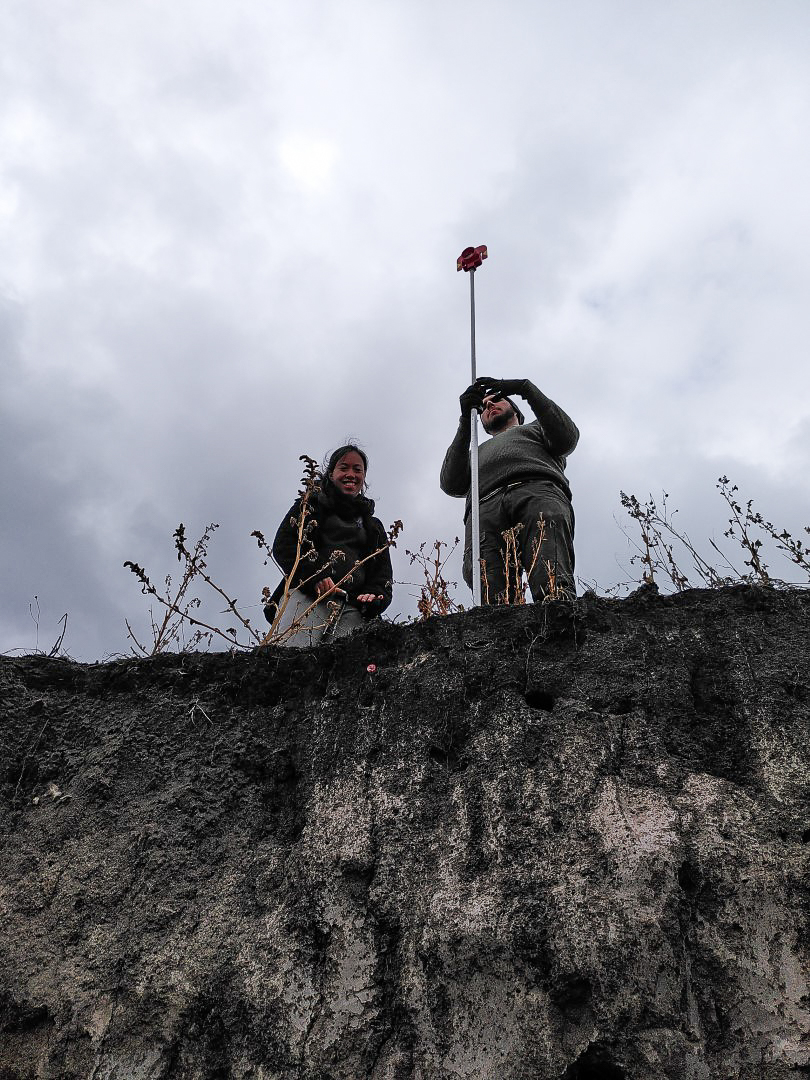
Day 3: Thursday, October 14th 2021
On our third day of the prospection, we started the morning off with a long drive about 50 minutes from our guesthouse before spending another forty minutes or so assembling the magnetometer (we’re getting faster – from 2,5 hours the first day to just 40 minutes!). The site of the day was near the village of Aradac and is a well-known site, dated to the Late Neolithic Vinča culture, ca. 5700-4500 BC.
There was a lot to do at this site, many fields to be surveyed and mapped out with the magnetometer. It was a cold day, the coldest one yet, but the sun was out most of the day. Unfortunately, we were slowed down significantly by a sudden rainfall, and then we were invited to winetasting by the neighbour whose vineyards we also surveyed. Since I don’t drink and I’m not really interested in wine in general, I only stayed for a short while and then returned to the fields to continue the work with Till and Nikola who also weren’t participating in the wine tasting. Some of my colleagues also got invited by another neighbour for a drink, and while this was very nice and kind (the hospitality of Serbians is incredible!), it resulted in us working until 6 PM – and then we still had about an hour’s drive home afterwards. The results of the day made up for it though, as the geomagnetic analysis revealed a small settlement with houses arranged in rows, typical for the time period.
I spent most of the day surveying and collecting artifacts from the surfaces of various fields. We didn’t find quite as much as the day before, but still a lot, including some decorated pottery sherds, rim sherds and animal bones.
In the evening, we visited “our” restaurant again, and I had a plata vegetariana for the third evening in a row! I actually had it all evenings except one but it never got boring as the dish changed a little every day! Somedays, I got mushrooms, some days not, some days fries, some days not, some days focaccia, some days not, etc. It was always interesting to see what I was going to get!




Day 4: Friday, October 15th 2021
We woke up to another cold yet beautiful morning with a clear sky and low-hanging fog on the Tisa river. Our site of the day was another far-away place, approximately a 45-minute drive from the guesthouse. The site is located near the village of Žabalj in the Jegricka Nature Park, and dates to the Vinča and Tisa cultures (contemporary cultures, around 5000-4500 BC). We were joined by Ida who’s working with the artifacts that we discovered during our project.
The village name means ‘frog town’ and although we didn’t see any frogs, I feel like the site lived up to its name. After assembling the magnetometer, Romy, Henning and I set out to map out a field, and Romy and I immediately got soaked. Even her high wellies couldn’t keep her dry going through high, wet grass. Within minutes, our shoes had puddles in them, and our socks were soaked through along with our trousers. We had no other choice than to return to our guesthouse despite the long drive so we could change our clothes and avoid getting ill.
Luckily, Robert and Mila were about to head back to pick up Martin who’d been to the vet’s with Lenka. So Romy and I joined them for the long ride home. Once we got back to the guesthouse, we quickly changed but I – stupid as I am – had no other boots with me, so I wandered around the town in socks looking for new wellies. Romy found some new trousers and socks, but we couldn’t find any suitable boots. Thankfully, Martin knew of a place on the way back to the site, and he treated us to a new pair of wellies each.
Although this may seem like lots of bad luck, I feel like it was fate that we had to go back. While we were roaming the streets of Novi Bečej, I spotted a little kitten under a parked car. I called to her and she came out, revealing the saddest sight I’ve ever seen. She had a bad leg she couldn’t walk on, the fur on her neck had come off and one of her eyes was badly damaged. I felt so incredibly bad but had no idea what to do other than take her to the vet’s and possibly adopt her although it wouldn’t be easy with my lifestyle. But while we were talking about what to do, a young local woman stopped as he saw the cat. We asked her if she knew of any animal rescue centre in the area, but there is none. She made some calls and when I saw tears running down her face, I knew the kitten would be in good hands. A delivery guy gave her a box to carry the kitten, and she told us she’d take her to the vet’s. I can only hope and pray that the kitten was able to get treatment and a new home – hopefully with the lovely local woman who showed so much love and care for a street cat that it melted my heart.
When we got back to the site, Romy and I started on the geomagnetics and eventually finished off the last field together with Kata. The others did surface collections of the same field and found many interesting artifacts, including worked obsidian, worked flint, rim sherds and decorated sherds. I also spotted the most unusually decorated sherd I’ve seen in my life, and obviously had to stop the magnetometer for a short moment to pick it up.
The results from the day were mind-blowing – or grandeur as Robert put it. We discovered a different type of settlement from the day before, a larger settlement with houses in a circular arrangement pointing towards a centre whereas the row settlements have no obvious centres. It’s contemporary with the row settlement at Aradac, suggesting that at least two different social organizations existed at the time, though the circular pattern is more common in the lower Tisa region whereas the row settlements are more common south of the Danube. This circular settlement type was first discovered at Borđoš, which is a much larger and more famous settlement, first excavated in 1913. In Borđoš, the centre of the village seems to have been a square, perhaps used for communal gatherings, which might also be the case at Žabalj.
After many days of getting up super early, I was exhausted when evening came around. After enjoying yet another plata vegetariana, I went straight to bed in the hopes of feeling a little more fresh the next day!
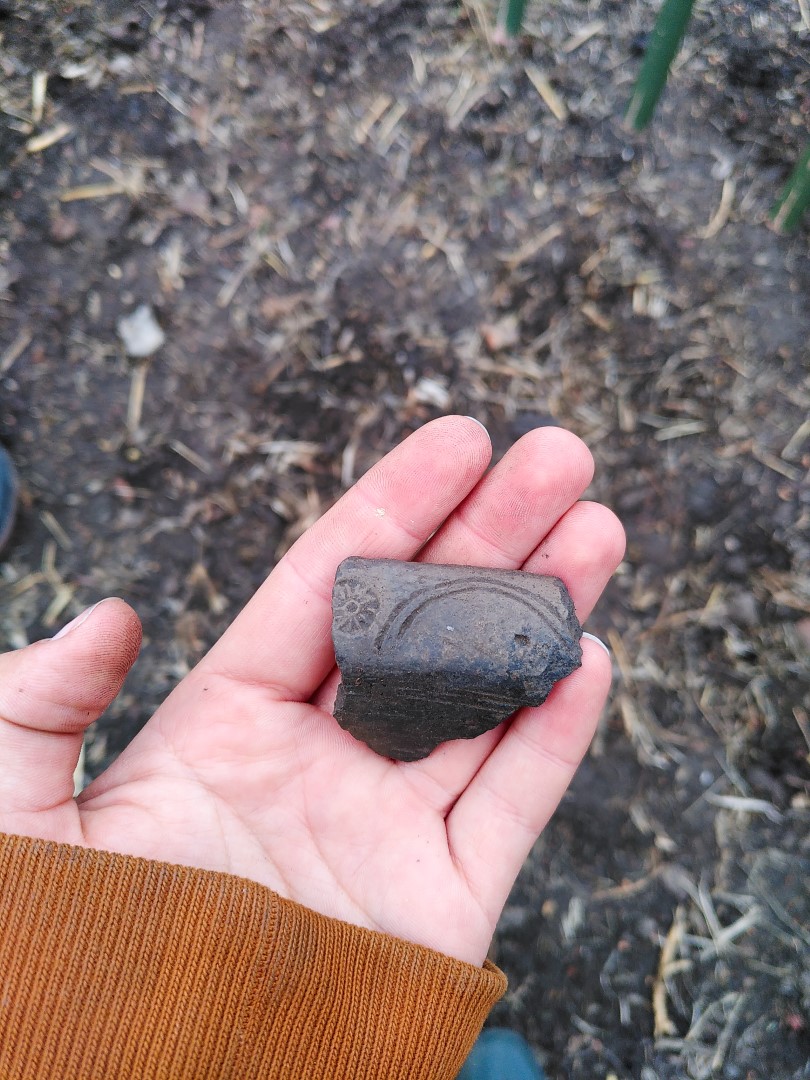

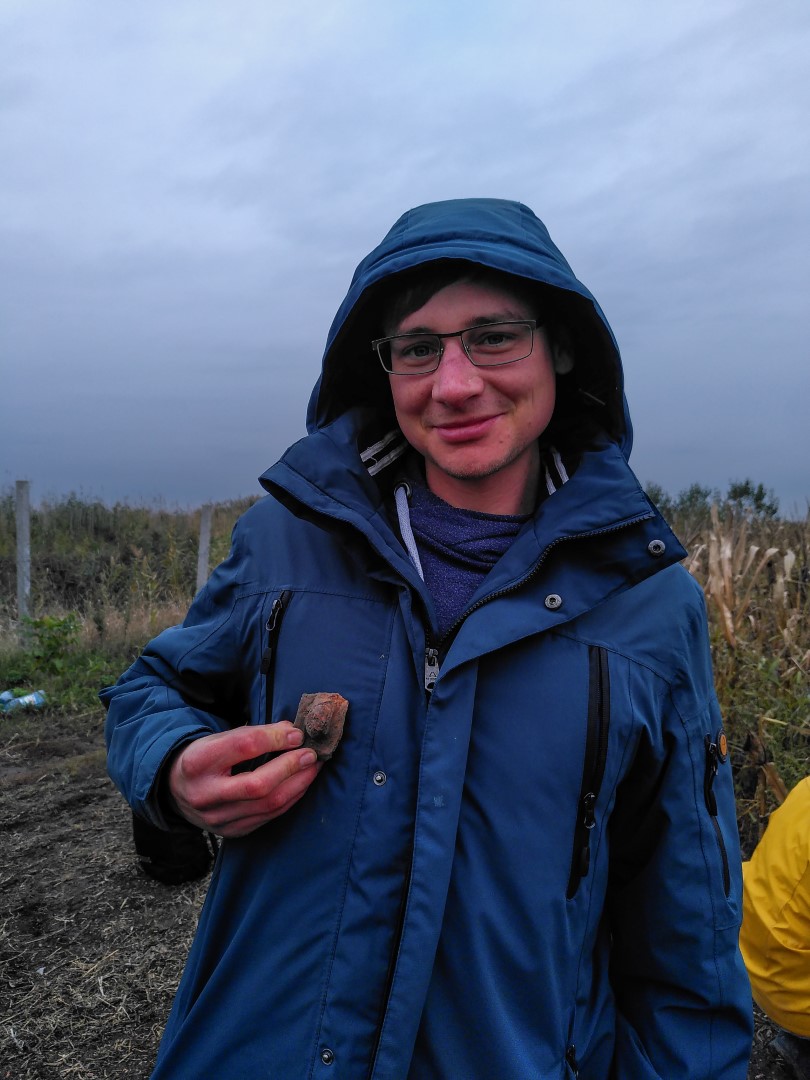
Day 5: Saturday, October 16th 2021
Robert, Mila and baby Polina left us in the morning, and we set off for the same site as the day before to finish it off. Jan Erik, also from Kiel, joined us in the middle of the day and stayed for the rest of the project.
We spent the day surface collecting from the field that had revealed the circular settlement the day before, and also doing some more geomagnetic surveys. We discovered two more groups of houses in circular arrangements, parts of the same settlement. We also found bags full of animal bones, diagnostic pottery sherds and decorated sherds, even some with decorations on both sides (I found one which is very typical for the Bronze Age in the area!). We also found a few parts of figurines and some beautiful tiny stone axes.
It was a beautiful day with sunshine and a clear blue sky, and we were joined by many geese, swans and a huge bird of prey, thanks to the surrounding Jegricka Nature Park.
In the evening, the project directors treated us to a meal at a beautiful riverside restaurant, and then Romy and I threw a little party in our room to celebrate the end of a wonderful first week in Serbia!
The following day, on the Sunday, we had the day off and went on an excursion to the nearby church ruins of Arača and the nature reserve of Slano Kopovo. Read more about that adventure here! Sadly, Sunday was also the day when Martin and little Lenka left us.
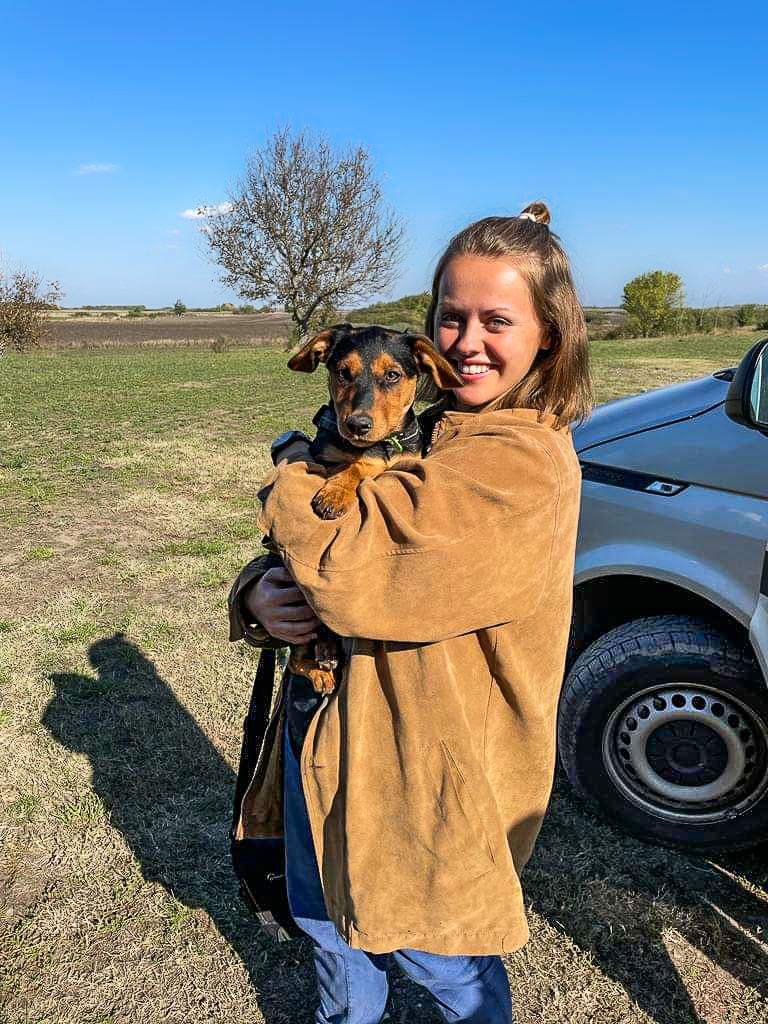


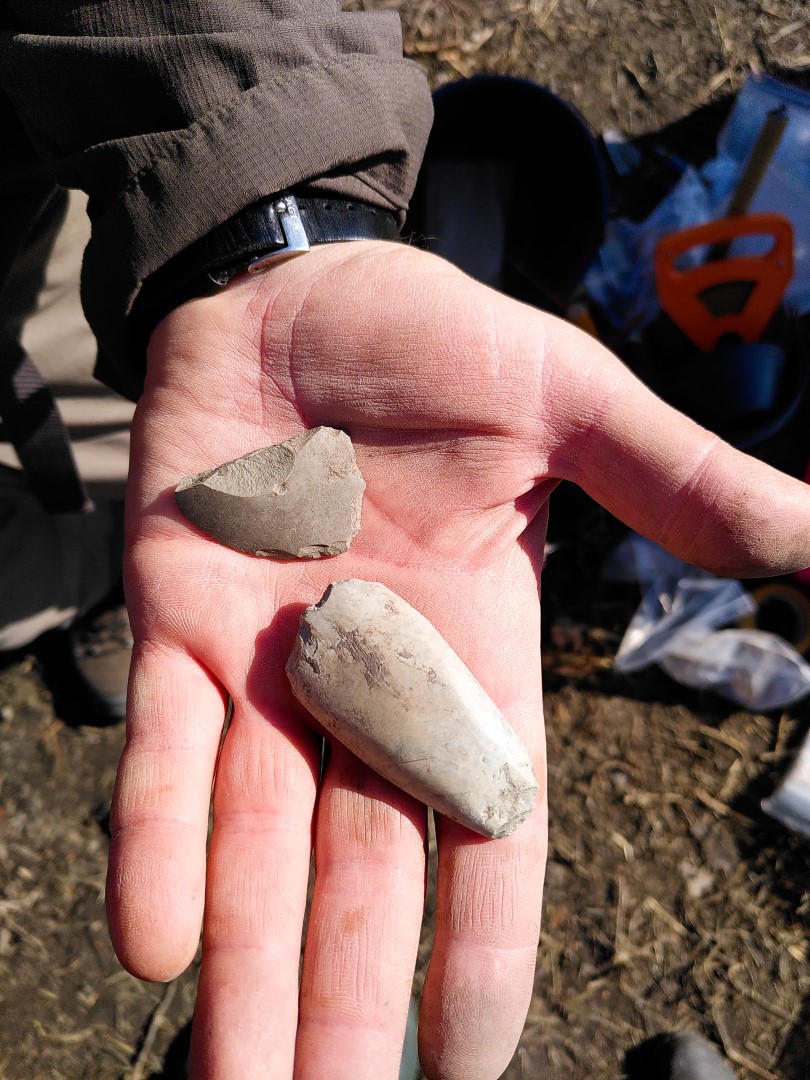

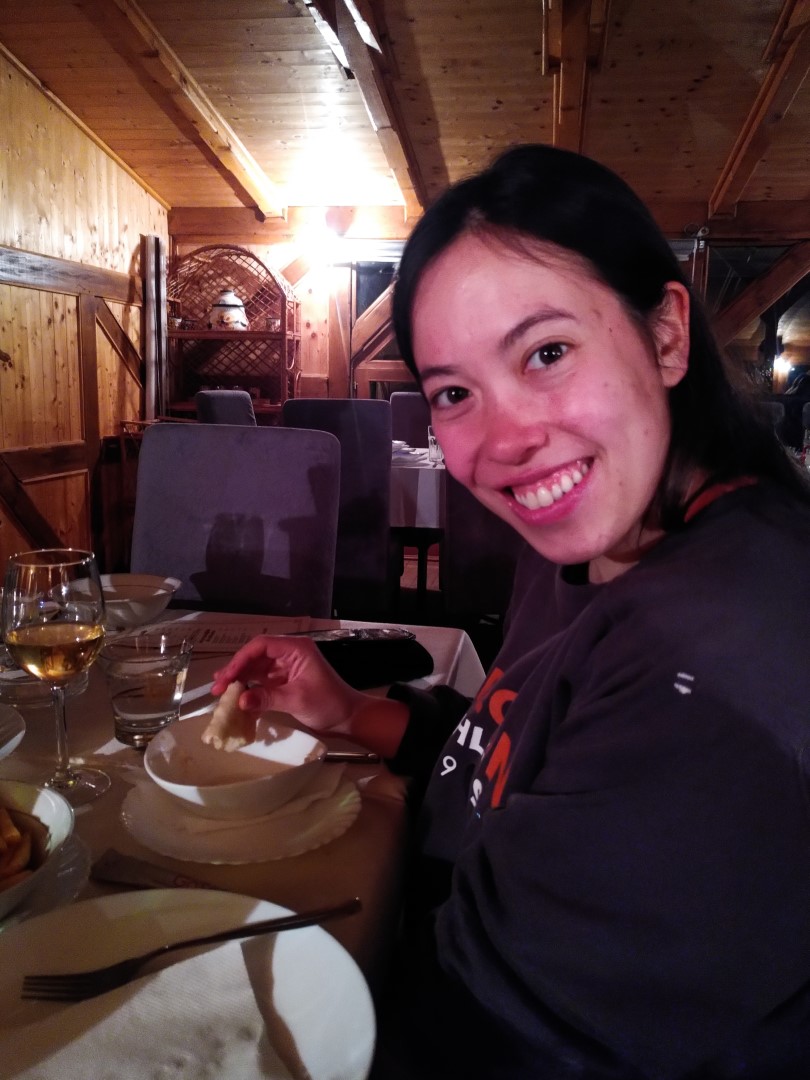
Day 6: Monday, October 18th 2021
A new week had begun, and Fynn from Kiel had joined our group. We returned to Aradac for half a day to finish off some fields that had to be mapped out and other fields that needed surveying. Unfortunately, we didn’t find anything significant, although I did find (what we think is) a grindstone from the Medieval period.
Afterwards, we headed back to Žabalj to survey a field that we’d missed when we were there last. We found lots of diagnostic pottery sherds, several decorated sherds and also some flint tools. Sebbo and I spotted a flint scraper at exactly the same time, and I also found part of a very small adze!
We ended the day early, at 3 PM, and spent the rest of the afternoon working on our individual projects. It was nice to have the afternoon free before going to the restaurant for yet another plata vegetariana – the best one so far!

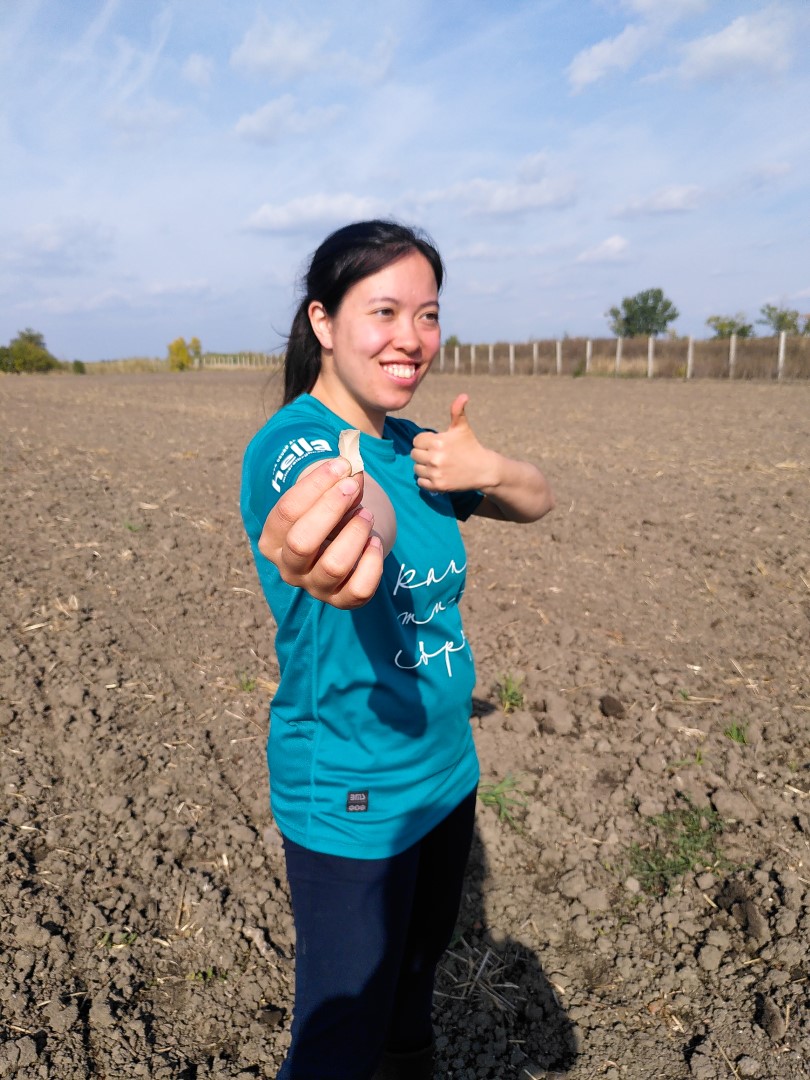


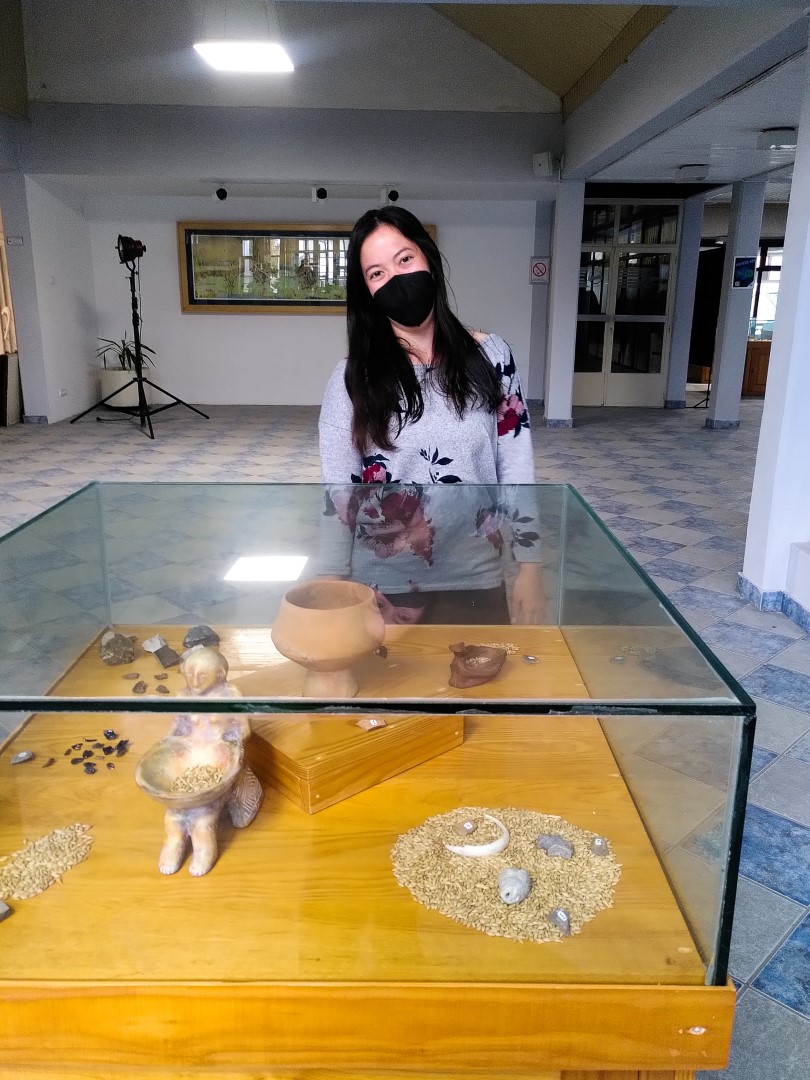

Day 7: Tuesday, October 19th 2021
We were in for a treat as we headed to Borđoš, the locus classicus for the circular settlements that I described above.
We spent the entire day there until shortly before sunset, arriving at 8.30 AM and leaving again at 5.20 PM. There was lots to do. In the morning, we cleaned an exposed profile which was incredibly slanted and high, making it was a really difficult task. We had to climb up and lean against it, trying not to slide back down as we cleaned the profile with our trowels.
Afterwards, I did some surveying of the field above the profile but there weren’t many artifacts to be seen because the field was full of corn. Kata and Till spent the day documenting the profile and pulling out artifacts while the rest of us surveyed the field and mapped it out with the magnetometer. We fought our way through the corn field, scratching our legs and tiring ourselves out, but for a good cause. Because we discovered several houses on the field, seemingly an extension of a previously discovered Bronze Age settlement.
Borđoš was my favourite site of the project because of its location by the river Tisa, which was the perfect spot for a pee break every now and then (also because it sounds like ‘tisse’ which is ‘pee’ in Danish… forgive me!). It was also a nice change that we didn’t have to drive for long to get there, just around half an hour.
When we got back and had unpacked the cars, I joined Sebbo and Romy for a little walk to the river. We had planned to watch the sunset but were too late and only got to see the remains of it as dusk set in. Romy and I then visited the nice riverside restaurant to get their delicious fries as takeaway even though we were going to the other restaurant less than an hour later… Those fries were just too good to not have again! 😉


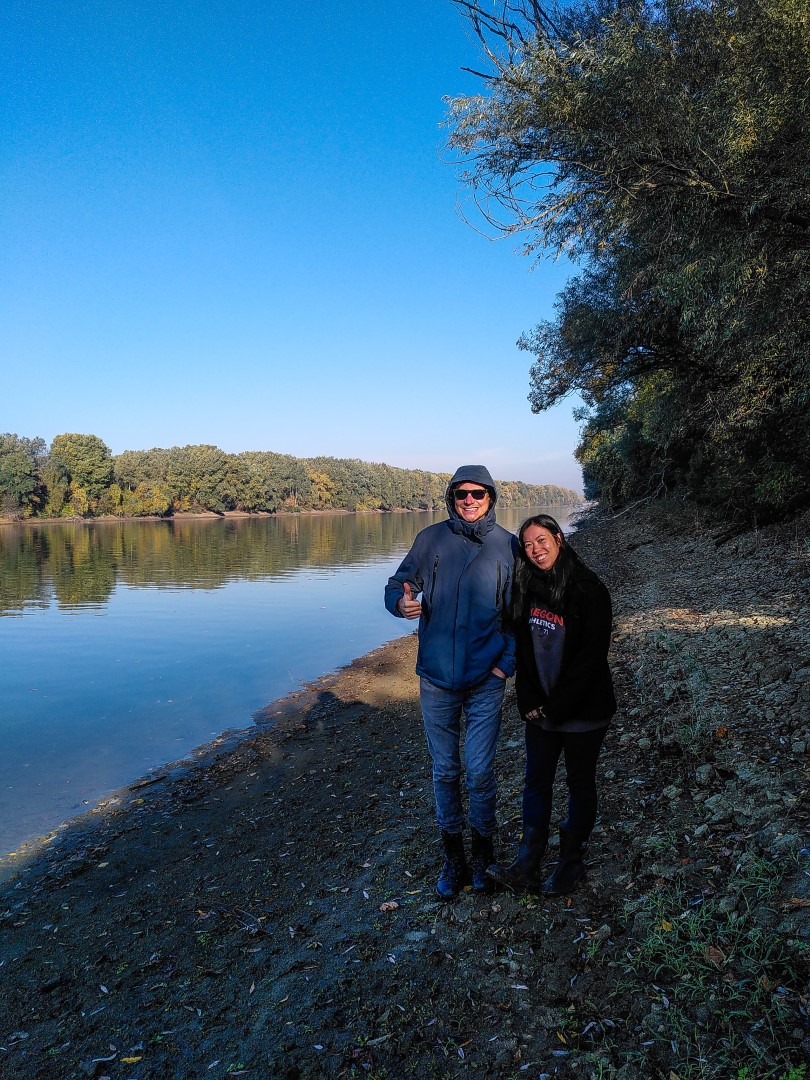
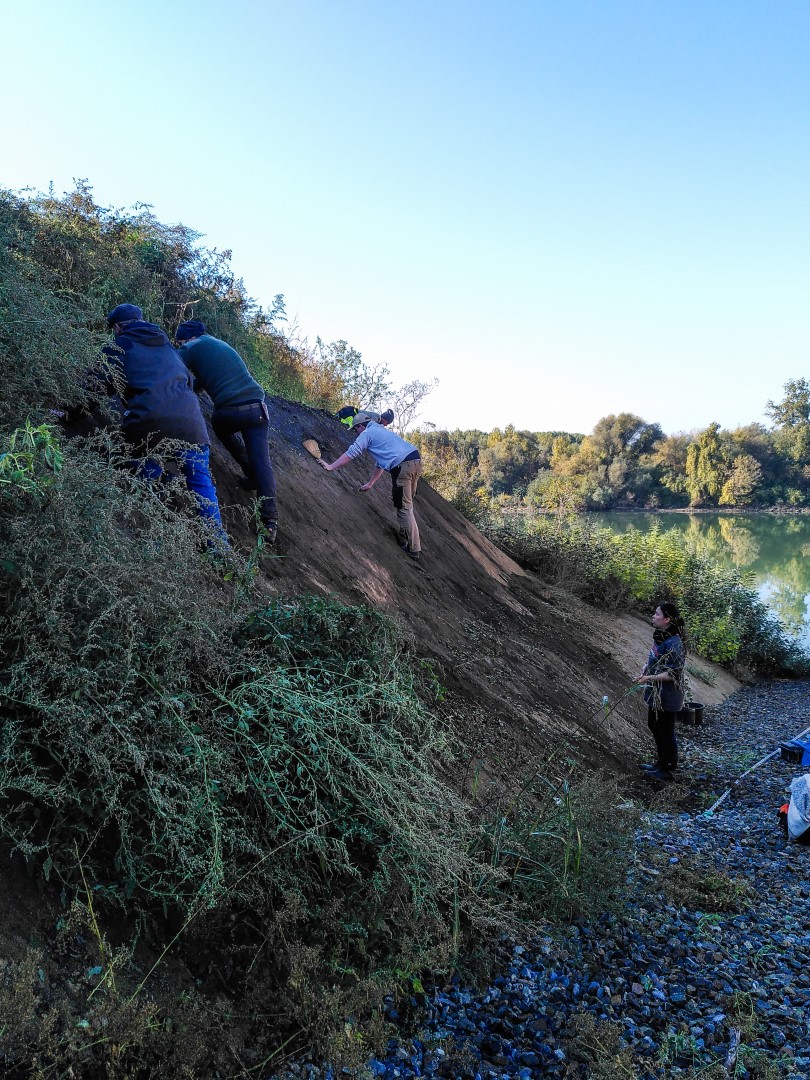

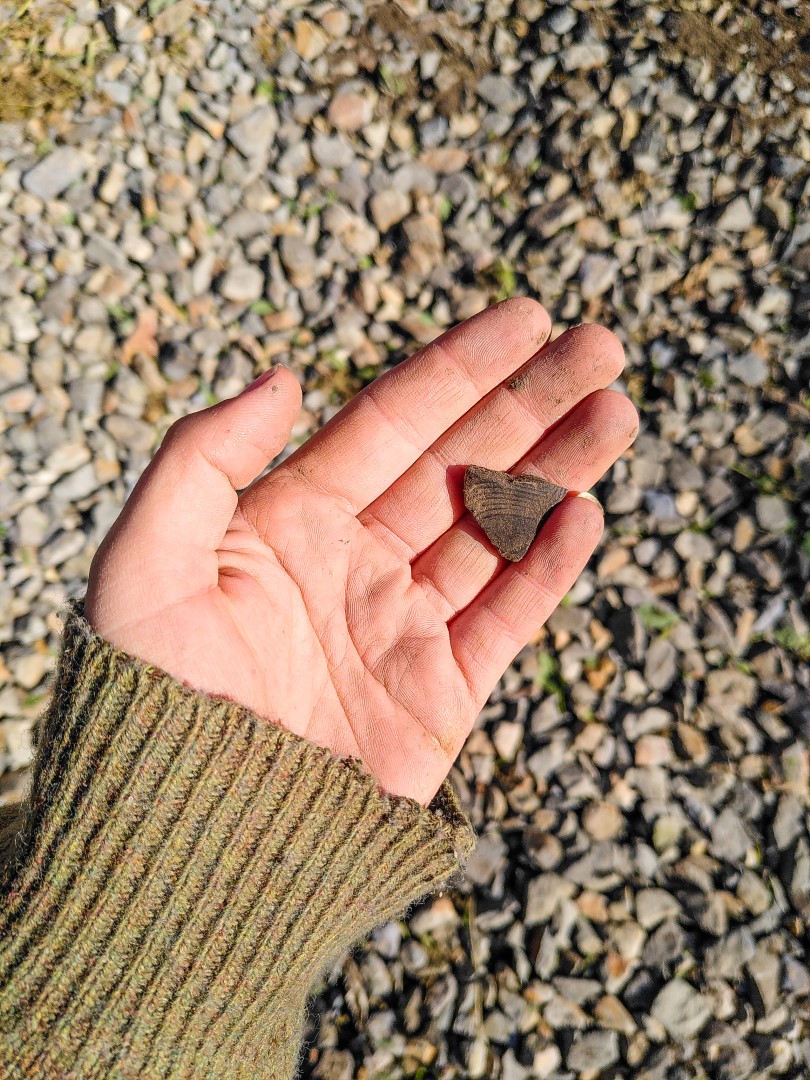

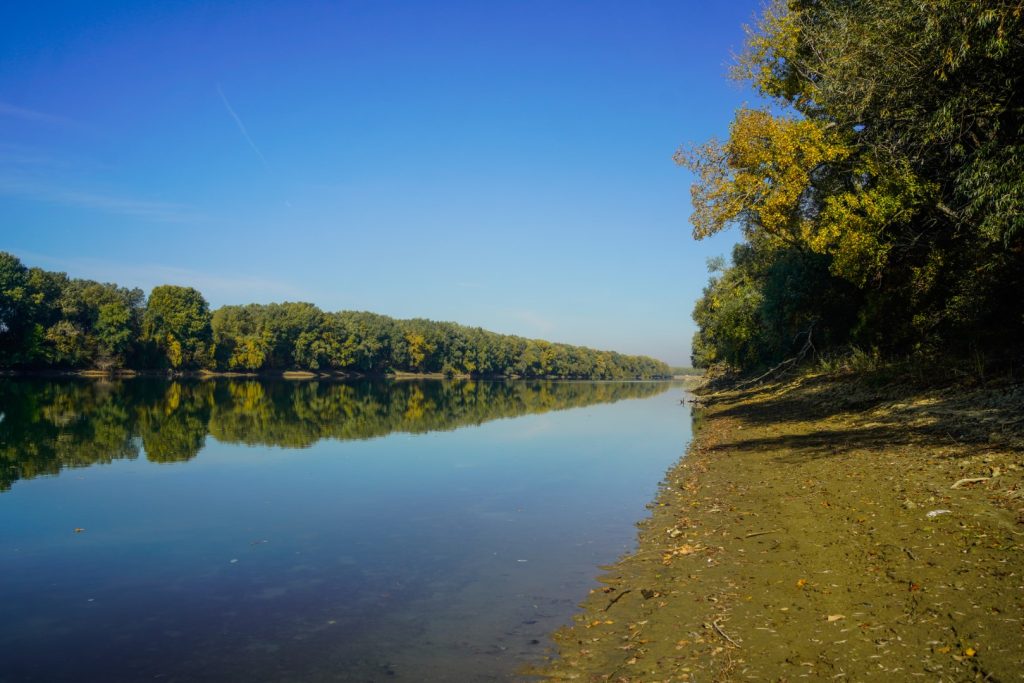
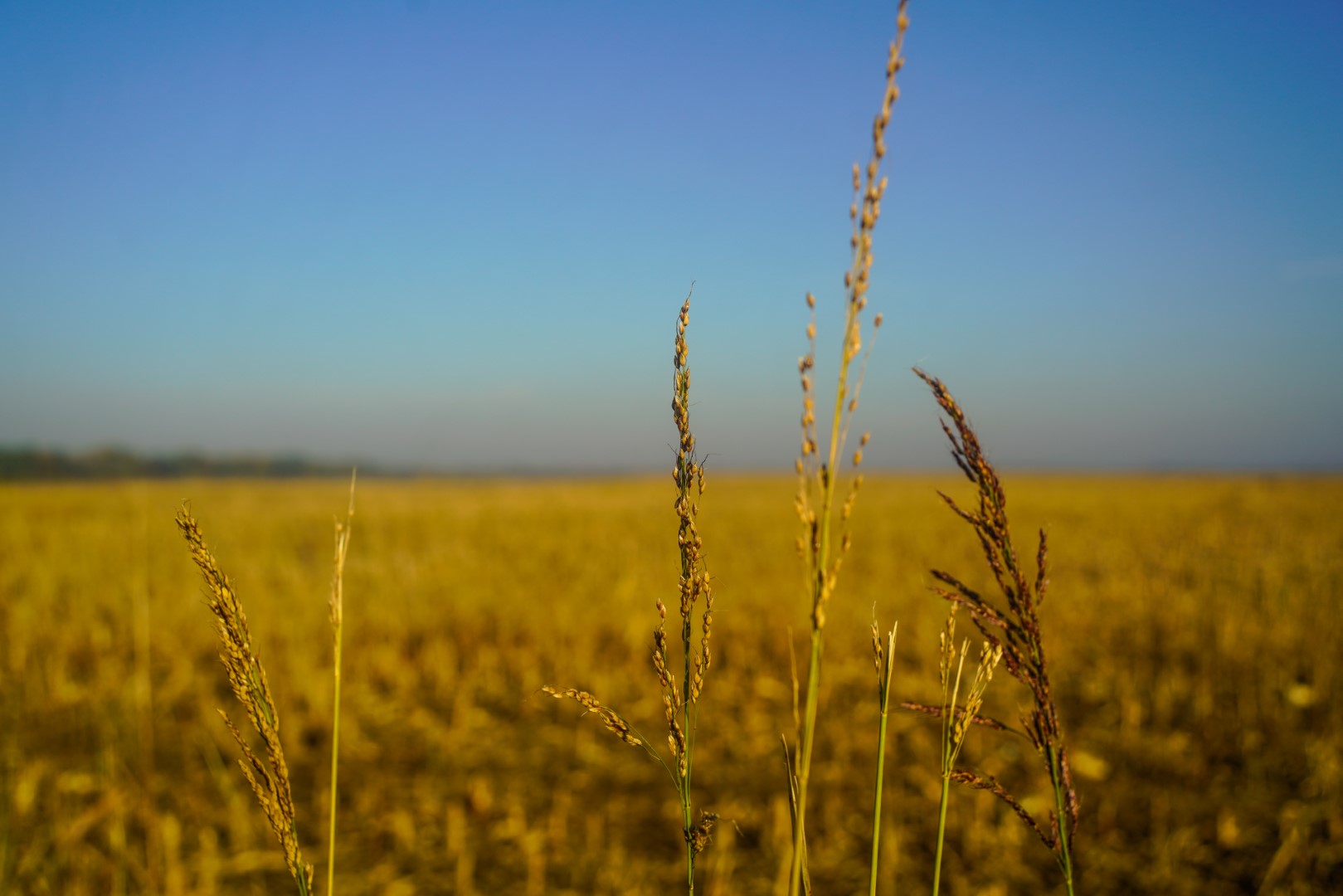

Day 8: Wednesday, October 20th 2021
Wednesday was another full day at Borđoš. We spent most of it doing geomagnetics on the same field as the day before, revealing some more (seemingly) Bronze Age houses. Henning found a human femur and mandible on the field – at first, we were afraid that it might be recent so the police would have to get involved but we’re pretty sure it’s not.
The most exciting find of the day was – very unexpectedly – a cremation burial of a child in the exposed profile that we cleaned the day before. Kata and Till spent the whole day excavating and documenting the burial along with Tijana, director of the Museum of Vojvodina in Novi Sad, who joined us for the day. In between geomagnetics, I also helped excavate the burial, and it was the first burial I was ever involved with. It was a humbling experience. I couldn’t help but feel a little sad while excavating – after all, this was someone’s child that died, even if it happened thousands of years ago. Unfortunately, we didn’t find any diagnostic sherds or any other artifacts to date the burial, but one thing’s for sure, this burial is definitely prehistoric, the question is just how old.
It was a most exciting day, and also a long one although I didn’t feel it as I was full of energy all day. Maybe it was because I’d finally had a night of eight hours of sleep, or because of the brilliant weather. It was 20+ degrees and very warm for late October! The good weather had a very annoying downside though, as we were attacked by bugs. For the first time ever, I felt hatred towards ladybirds – they were just everywhere on us and around us…
We returned back to Novi Bečej shortly before sunset, so Sebbo, Romy, Henning and I hurried down to the river to watch the spectacle. Aftewards, Romy and I visited the second hand store and of course bought more clothes, and then we went to the restaurant for the 1000th plata vegetariana! We also discovered a Mini Pani food truck in town, which sells fast food in tiny sizes (for example mini pizzas, mini paninis, that kind of thing!), and Romy and I absolutely LOVED the mini pizzas. We went back several times to buy more and made the guy selling them laugh as we placed larger orders each time. They were just so good!


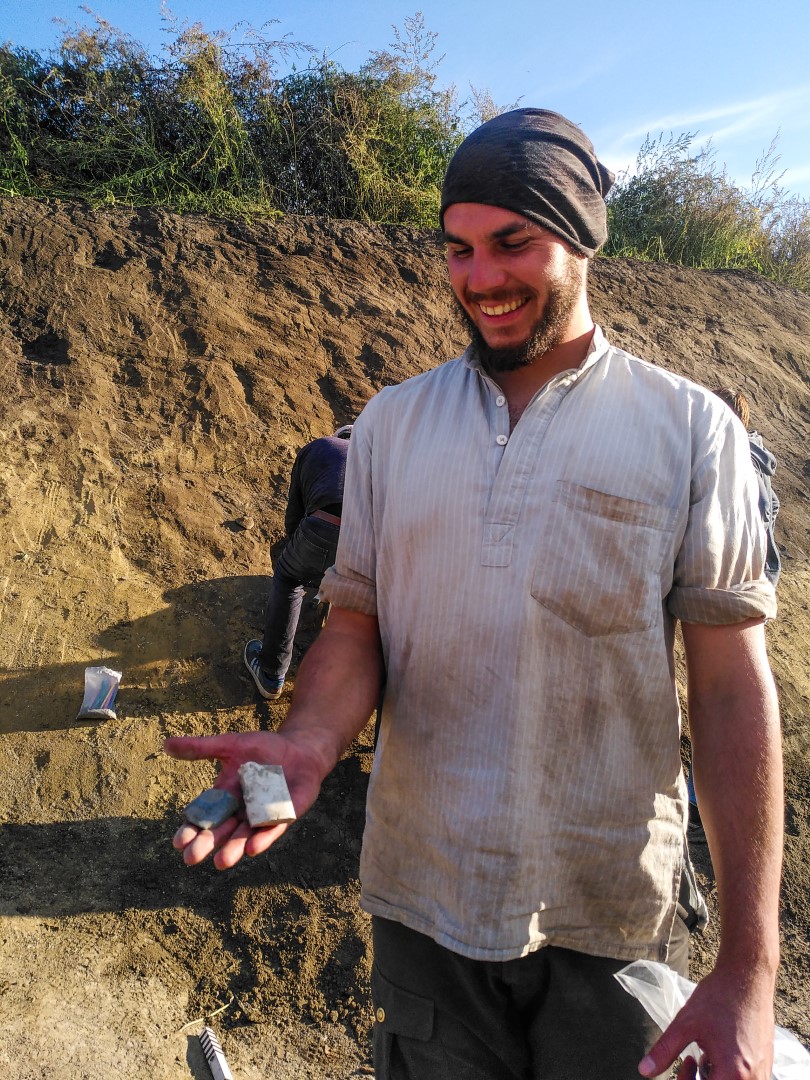

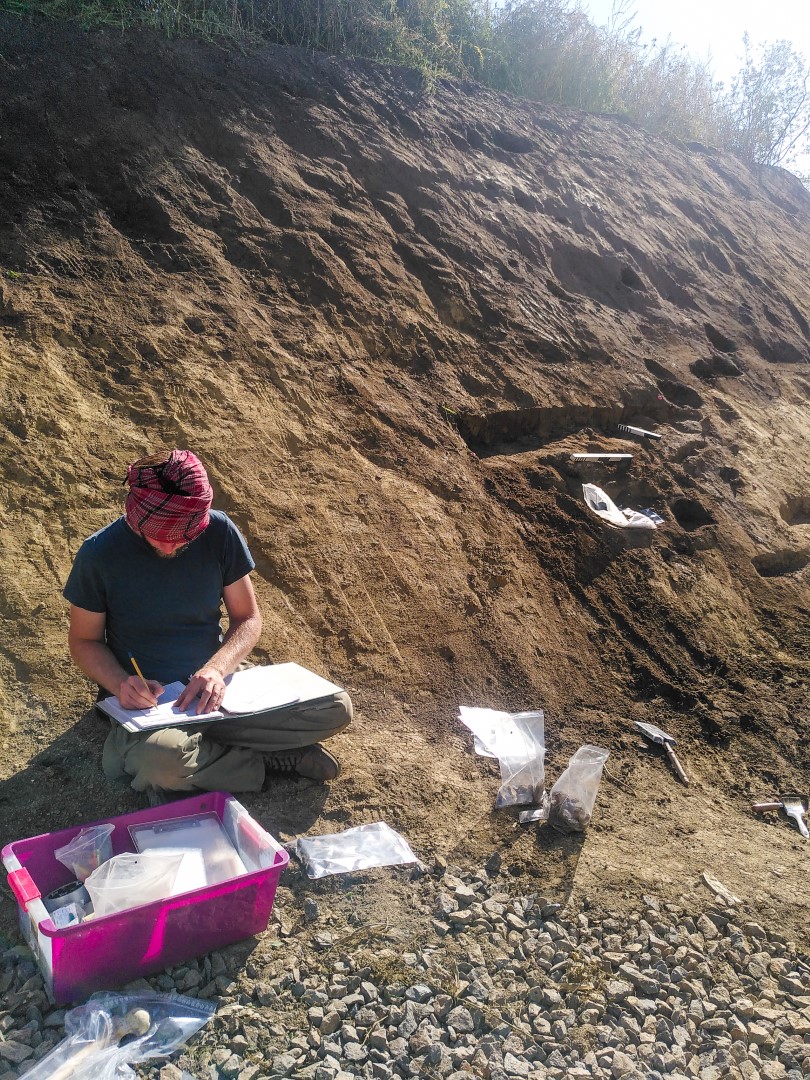

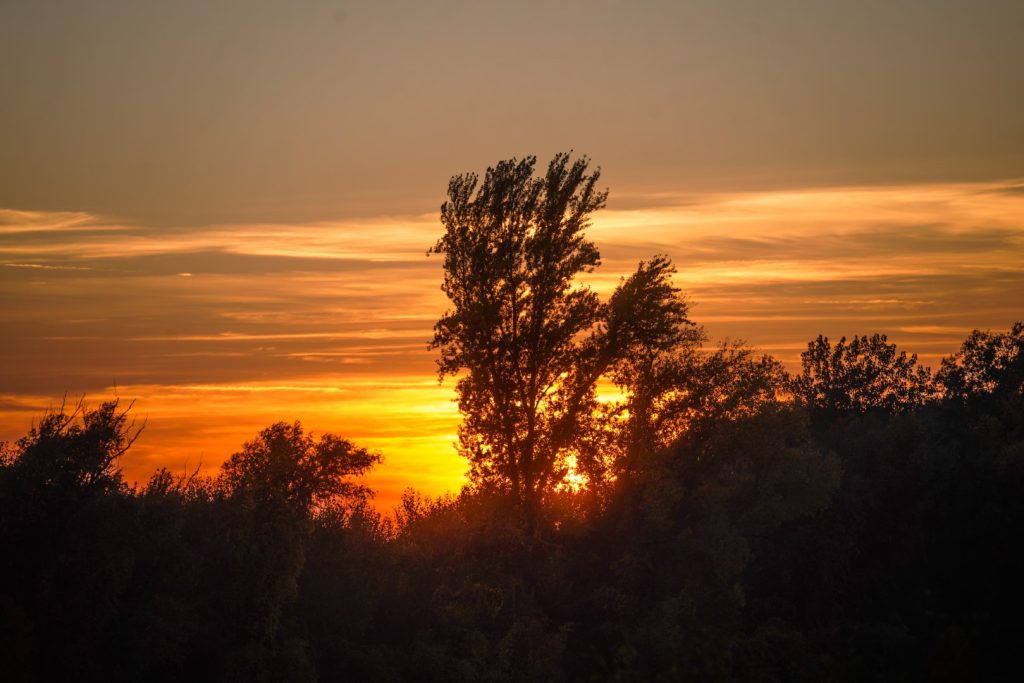

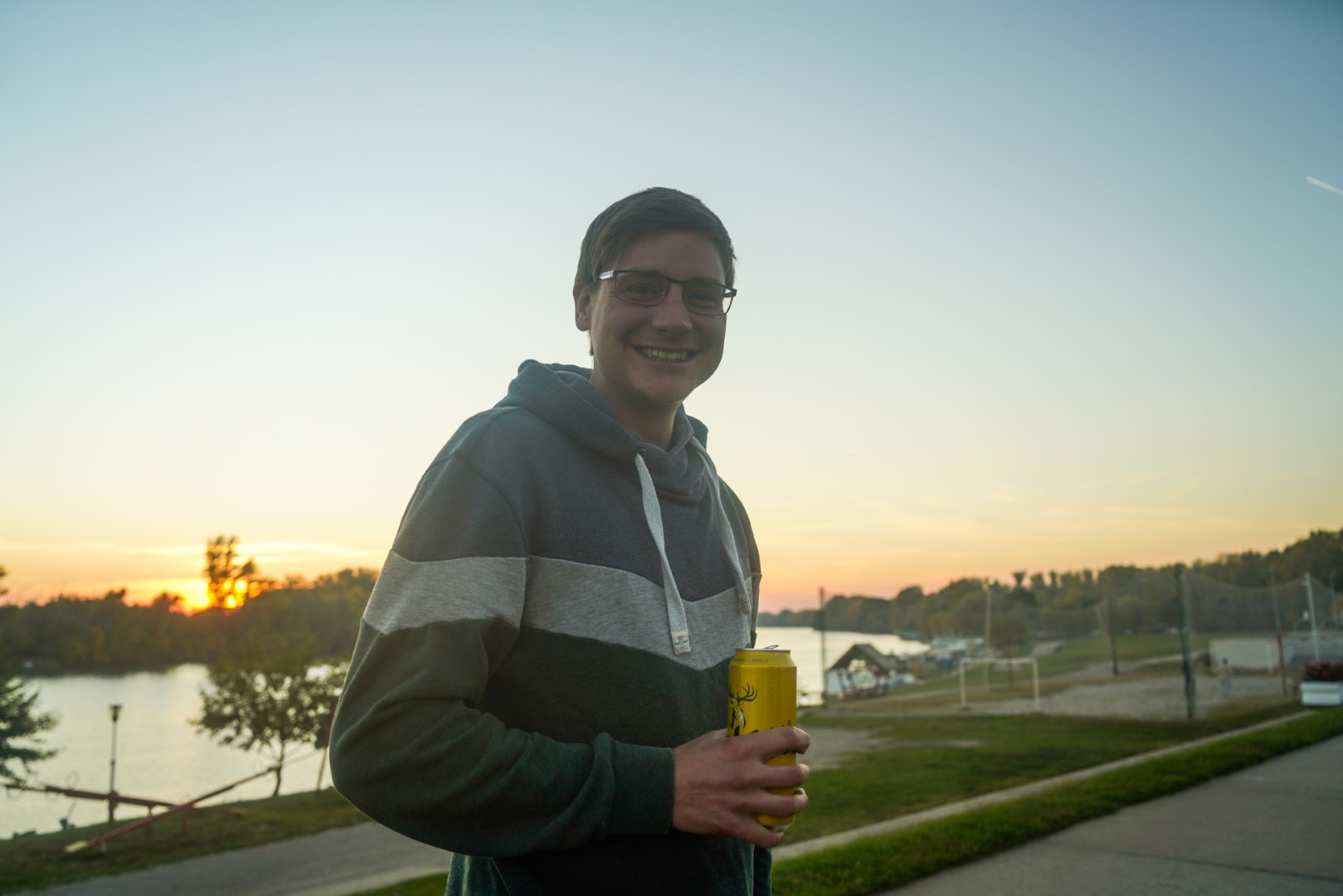
Day 9: Thursday, October 21st 2021
Kata woke up way before the rest of us and returned to Borđoš by herself to clean another exposed profile. She found another skeleton, presumably an adult, with a Vinča pottery sherd nearby. So it seems that Kata discovered the third burial from the Vinča culture in the area, a very very impressive result!
The rest of us awaited her return in the morning, and then headed out to the fifth and last site, Perlek, a settlement with burials from the Copper Age. There have also been previous finds from both the Neolithic and the Bronze Age at the site.
There were many farmers about, and one of them called the local security force when he spotted us. They thought we were there to steal the trees lining the fields, but Kata explained what we were actually doing in Hungarian and they understood and let us be. We sure were lucky to have her on the team – for many reasons!
We mapped out a few fields which revealed a settlement surrounded by ditches from either the Neolithic, Copper Age or Bronze Age (it’s difficult to say for sure with these types of settlements without an excavation). We also did some surface collecting although we didn’t find much.
At 4 PM, we left the site and drove back home to clean the magnetometer and pack everything. Our project had come to an end. A fantastic time in my life, even though it was short, came to an end. We enjoyed a last fun evening at “our” restaurant with a teary farewell to our lovely waiter – and Romy and I also had a plate of farewell fries at the restaurant by the river!

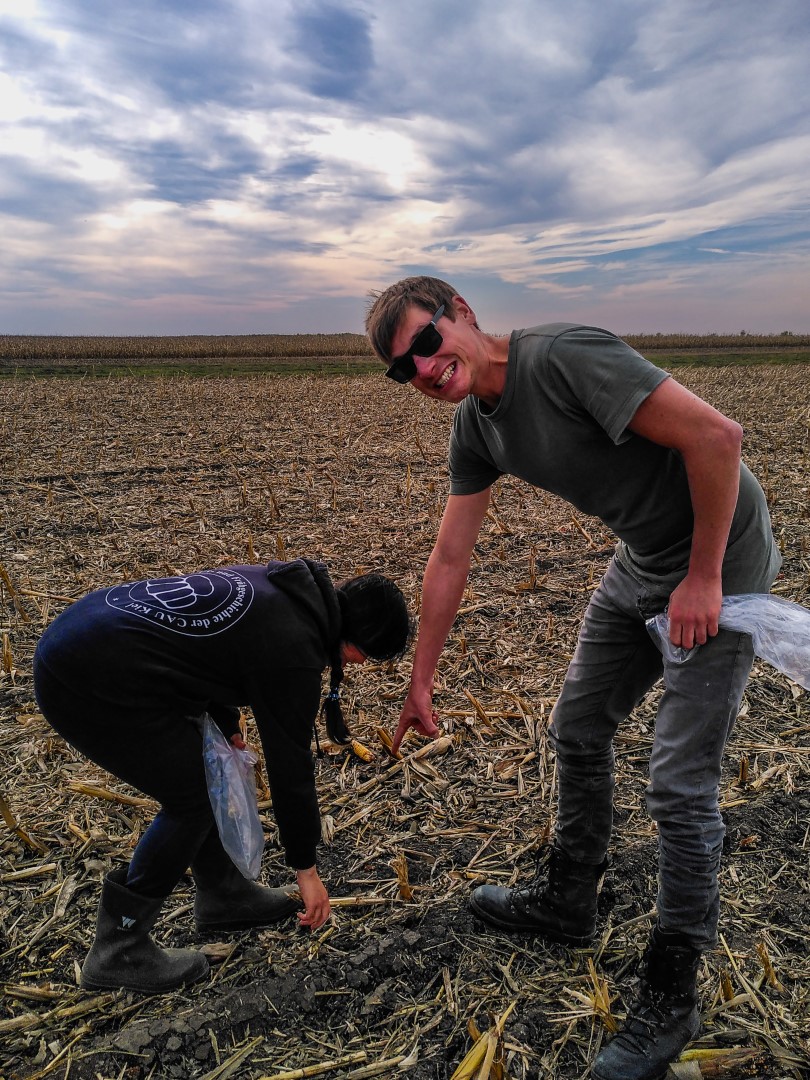
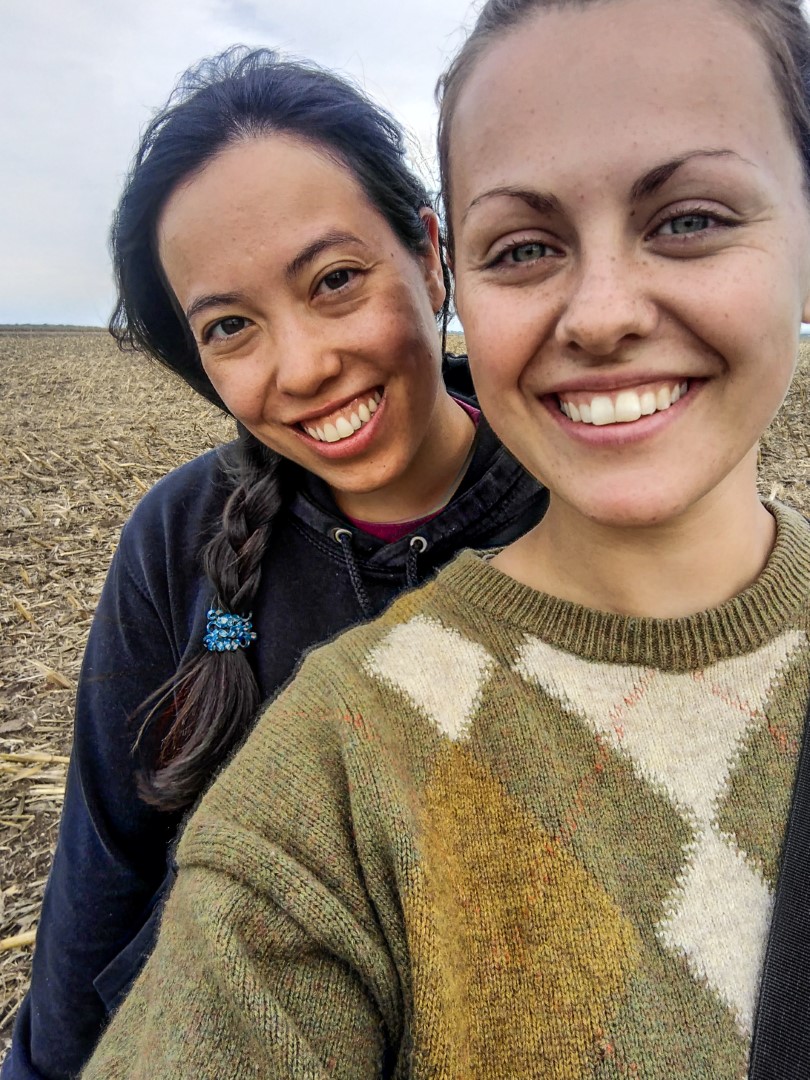
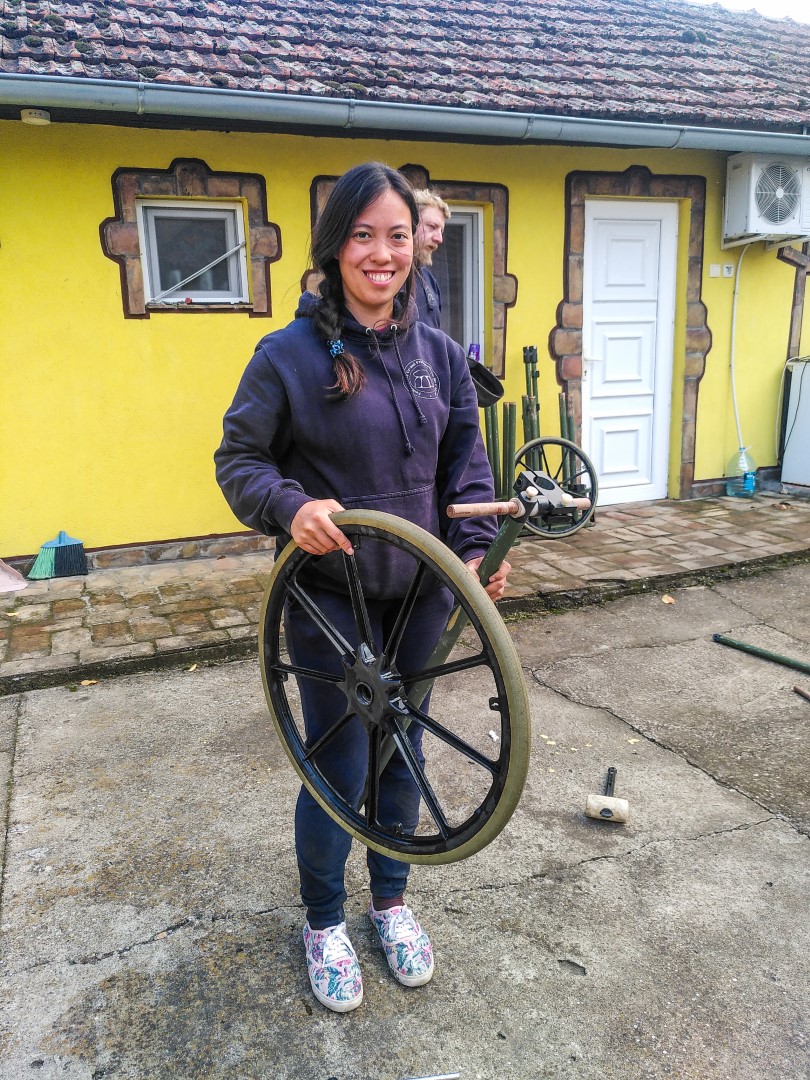

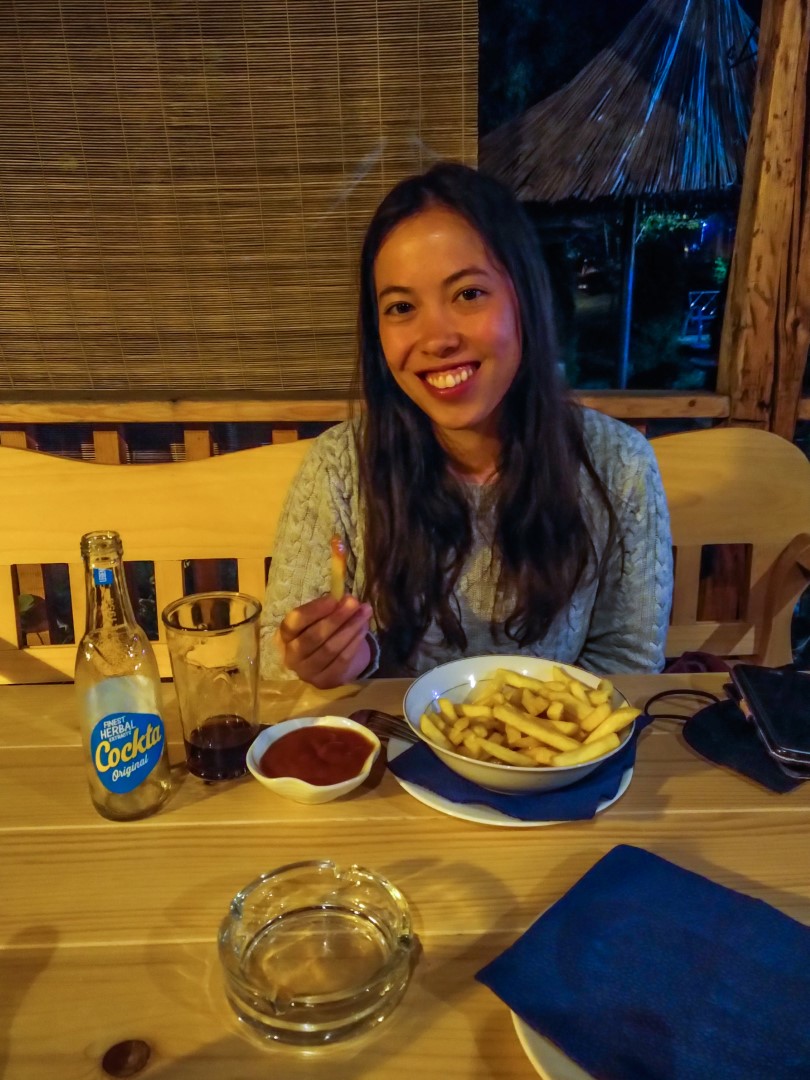
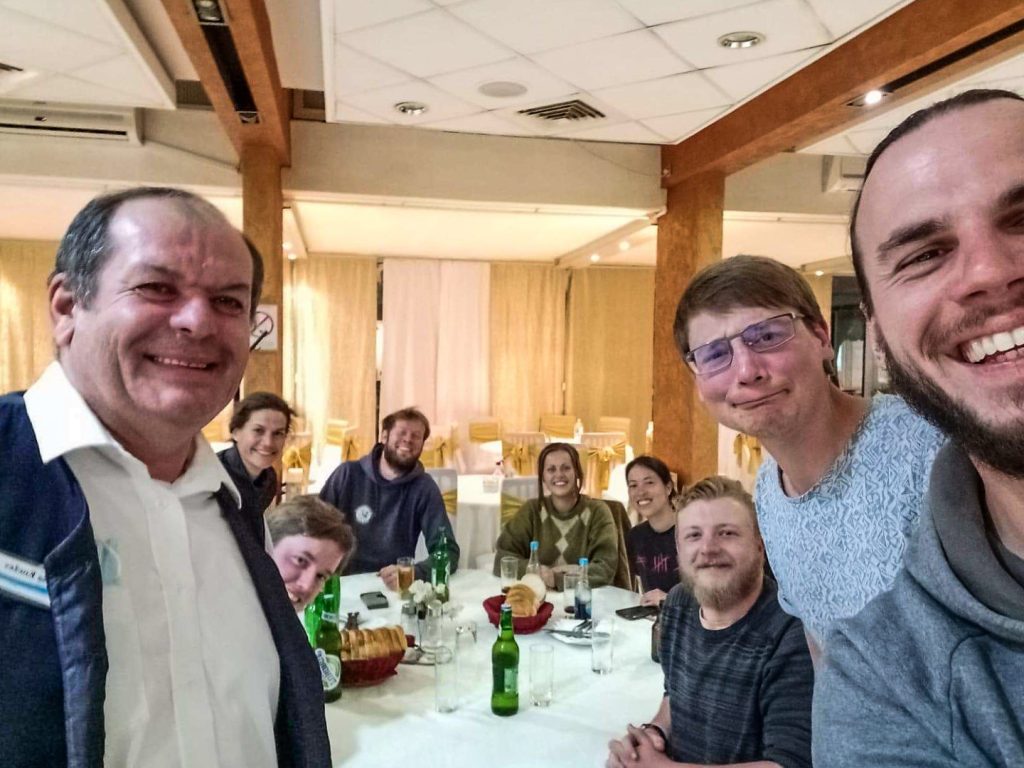
I was sad to see the others leave the following morning while Fynn and I stayed behind to travel to Novi Sad a few hours later. BUT I couldn’t be happier to say that I’m returning to Novi Bečej with most of the team in just a few weeks! And little Lenki will be joining too. I can’t wait!
Leave a Comment
Pingback: An unexpected visit to Kikinda, a small Serbian city near the border to Romania – I Live as I Dream on 28/02/2022
Pingback: Novi Sad and beyond: 13 must-sees in and around Serbia’s culture capital – I Live as I Dream on 28/02/2022
Pingback: Fruška Gora National Park: An autumnal hike through ‘the Jewel of Serbia’ – I Live as I Dream on 28/02/2022
Pingback: Weekend in Belgrade: An early spring return to Serbia – Northtrotter on 28/02/2022
Pingback: An unexpected visit to Kikinda, a small Serbian city near the border to Romania – Northtrotter on 28/02/2022
Pingback: My worst travel moments of 2021 – Northtrotter on 28/02/2022
Pingback: My October 2021: From Georgia to Serbia to Berlin – Northtrotter on 28/02/2022
Pingback: Borđoš 2022: A second season of archaeological fieldwork in northern Serbia – Northtrotter on 28/02/2022
Pingback: My travel year of 2021 – Northtrotter on 28/02/2022
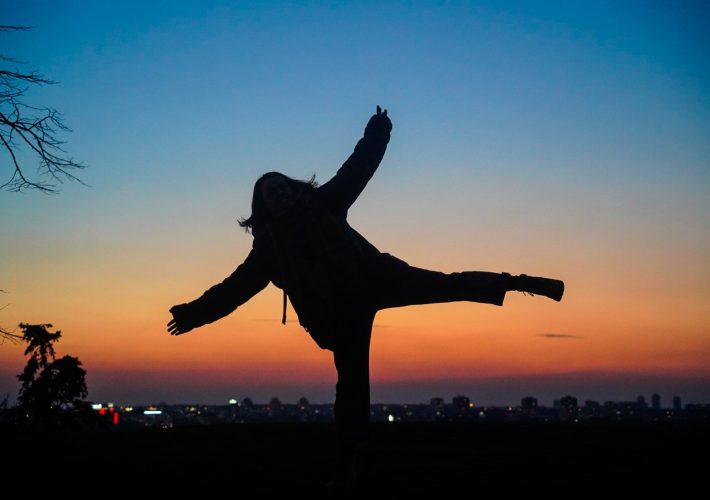
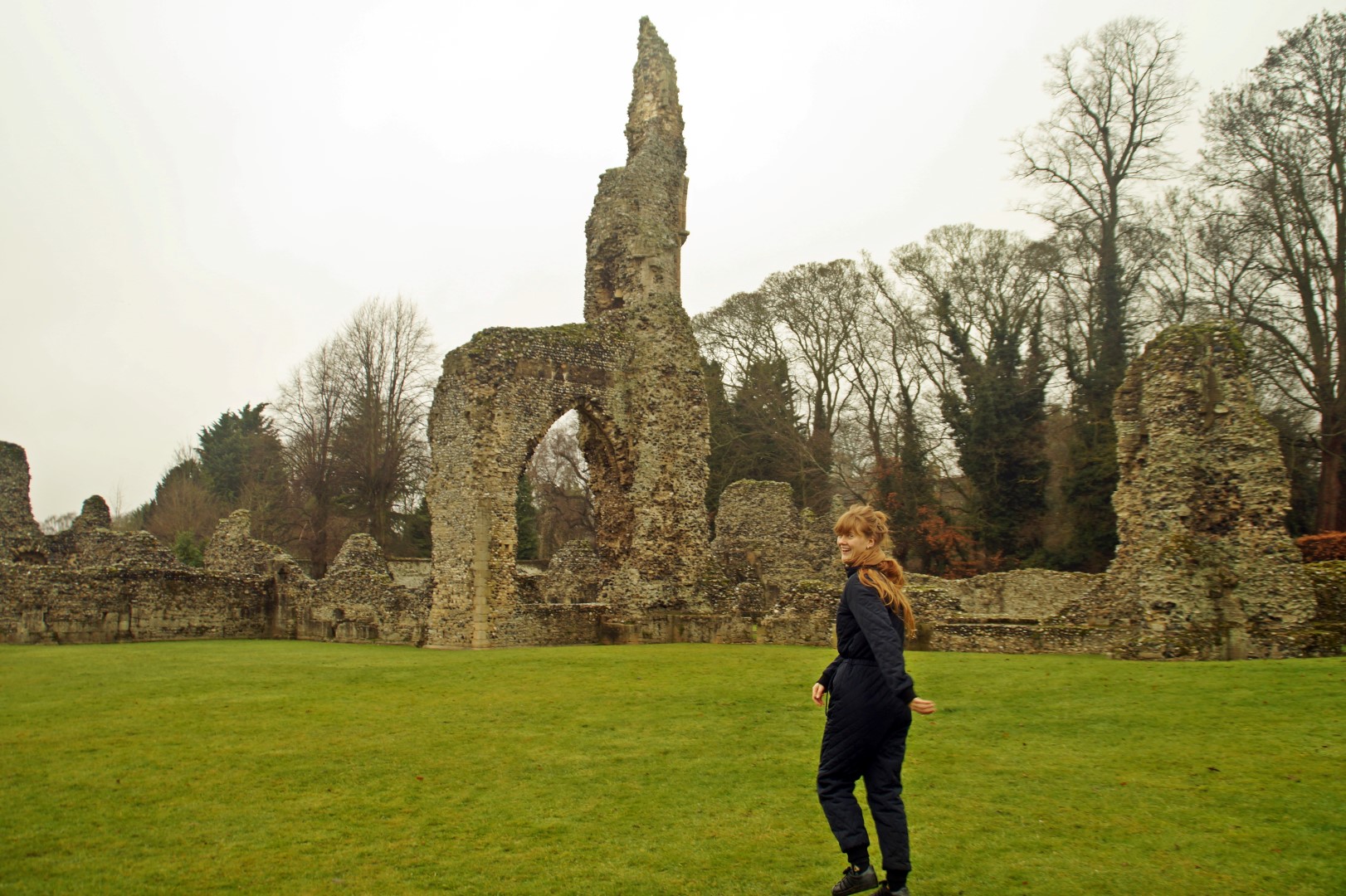


9 COMMENTS